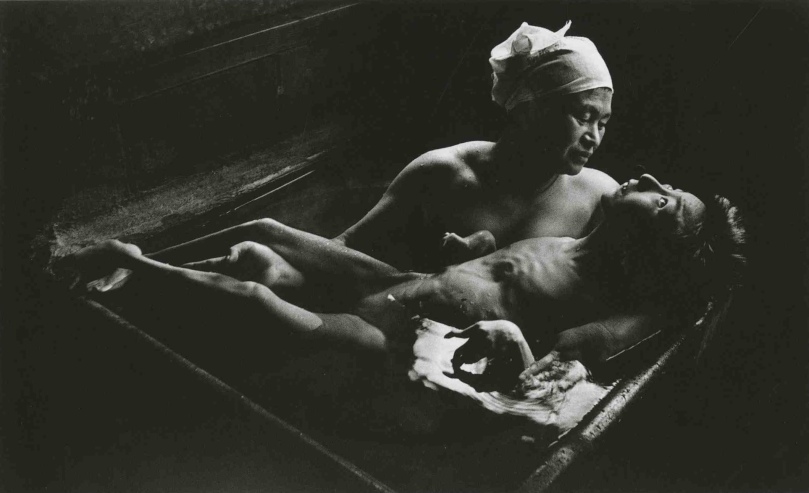A Facebook friend sent me this link about the photograph I referred to earlier as the greatest ever made, "Tomoko Uemura in her bath". Here is the background story to the pic. I did not know that because W. Eugene Smith got beat up by goons from the company that was damaging the environment it lead to national exposure for the victims of the Minamata Japan Mercury poisoning. The beating badly injured Smith, who was already quite frail, for the rest of his shortened life. In the end thou, since he helped so many victims, his pain and suffering might have be worth it! This is a prime example of how social documentary photography, how photographs with heart and true human emotion in them, can cause positive change in the world. W. Eugene Smith will always be my photographer hero.
This story is from IconicPhotos. wordpress
Photo Story "Tomoko Uemura in her bath

This story is from IconicPhotos. wordpress
Photo Story "Tomoko Uemura in her bath
First housecats in Minamata, on the west coast of Kyushu in Japan, went berserk, jumping into the sea. Then it began to affect local fishermen, whose lips and limbs would tingle and then become numb. Their speeches slurred; many died. Women gave birth to deformed foetuses and blind children. It was termed Minamata disease, a neurological syndrome caused by severe mercury poisoning. Caused by methyl mercury in industrial wastewater from the Chisso Corporation’s chemical factory from 1932 to 1968, the disease claimed thousands of lives surreptitiously while the government and company did little to prevent the pollution.
It was a dramatic photographic essay by W. Eugene Smith in LIFE that brought world attention to the disease. Smith and his interpreter, a Japanese American student from Stanford University named Aileen Mioko Sprague (whom Smith would soon marry) were touring Japan for an exhibition of his works. They planned to stay in Minamata for three weeks, but ended up staying for three years. For eighteen dollars a month, they rented a house belonging to one of the victims, sharing a dirt-floored kitchen and bath, where they developed photos.
The most striking photo of the essay shows Ryoko Uemura, holding her severely deformed daughter, Tomoko, in a Japanese bath chamber. Tomoko was poisoned while still in the womb. The pieta of our industrial age, critics called it, and the photoessay was ‘a case study in Japanese politics’ the New York Times wrote. Although the photo was posed for Smith, the family subsequently asked the photo to be withdrawn from circulation. The picture does not appear in recent anthologies of Smith’s works.
A month after this photo, on January 7th 1972, Smith joined other Minamata victims at a demonstration at Chisso’s plant near Tokyo, where he was attacked and seriously injured by Chisso employees which left him with a permanently damaged eye and a crippled health. This attack made Smith a familiar face on local news. A Tokyo department store staged an exhibit of Smith’s photos, which was visited by 50,000 people in twelve days. The photos led the government to take more direct actions and the company to pay compensation. Tomoko died in 1977 at the age of 21.


























